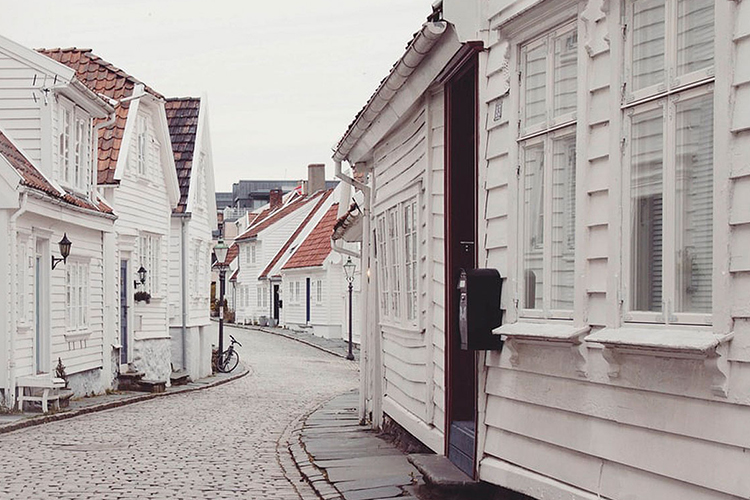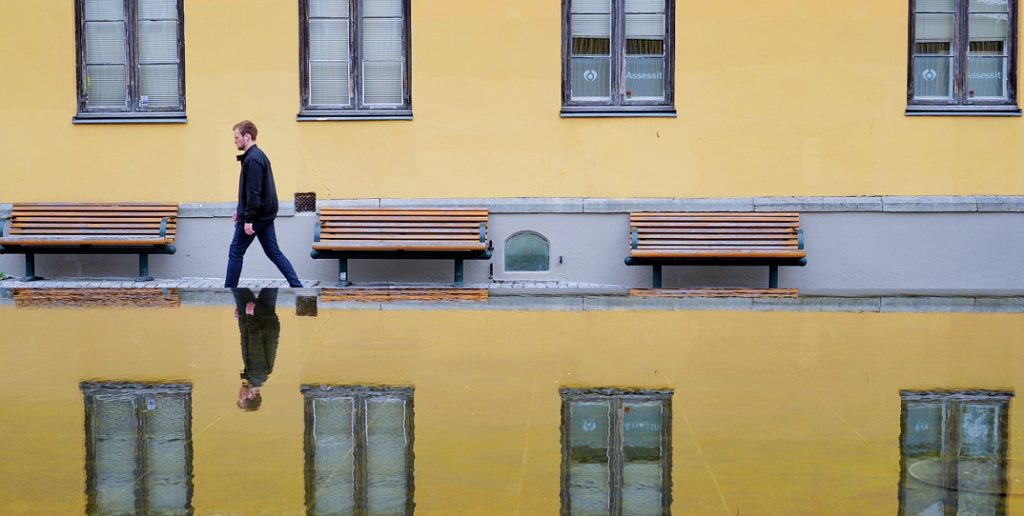
5 Nordic holiday traditions influenced by ancient local celebrations
Christmas is, without question, the holiday that reigns supreme in the Nordic countries, drawing people together
The Nordic region – made up of Scandinavia and states to the east and west – is one of the most lucrative markets in Europe.
The key to success in this region is understanding what makes it unique, as well as the ability to adapt your business to the needs and expectations of the Nordic market.
Scroll down to find out more about the Nordic countries and what makes them tick.
The Nordics are all situated in Northern Europe, with the exception of Iceland and Greenland, which lie out in the Atlantic Ocean.
Hover over each country to find out more.
The Nordics are all situated in Northern Europe, with the exception of Iceland and Greenland, which lie out in the Atlantic Ocean.
Tap on each country to find out more.
Total population
GDP per capita, approx. (2019)
Population 29,000
Languages Swedish
Currency Euro
Territory of Finland
Population 5.8 million
Languages Danish, Faroese, Greenlandic
Currency Danish krone
Territories Faroe Islands, Greenland
Population 51,000
Languages Faroese, Danish
Currency Danish krone
Territory of Denmark
Population 5.5 million
Languages Finnish, Finland Swedish, Sámi dialects
Currency Euro
Territories Åland
Population 56,000
Languages Greenlandic, Danish
Currency Danish krone
Territory of Denmark
Population 350,000
Languages Icelandic
Currency Icelandic króna
Population 5.3 million
Languages Norwegian, Sámi dialects
Currency Norwegian krone
Territories Jan Mayen, Svalbard
Population 10.2 million
Languages Swedish, Finnish, Sámi dialects,
Romani, Meänkieli, Yiddish
Currency Swedish krona
Population 29,000
Languages Swedish
Currency Euro
Territory of Finland
Population 5.8 million
Languages Danish, Faroese, Greenlandic
Currency Danish krone
Territories Faroe Islands, Greenland
Population 51,000
Languages Faroese, Danish
Currency Danish krone
Territory of Denmark
Population 5.5 million
Languages Finnish, Finland Swedish, Sámi dialects
Currency Euro
Territories Åland
Population 56,000
Languages Greenlandic, Danish
Currency Danish krone
Territory of Denmark
Population 350,000
Languages Icelandic
Currency Icelandic króna
Population 5.3 million
Languages Norwegian, Sámi dialects
Currency Norwegian krone
Territories Jan Mayen, Svalbard
Population 10.2 million
Languages Swedish, Finnish, Sámi dialects,
Romani, Meänkieli, Yiddish
Currency Swedish krona
The Nordic countries are linguistically very diverse. The three Scandinavian languages – Danish, Norwegian and Swedish – are somewhat mutually intelligible. Related to these are Faroese and Icelandic, which have changed less from their common ancestor language, Old Norse.
Finnish stands out as the only unrelated language to these – although it is related to the Sámi dialects spoken in Northern Norway, Sweden and Finland.
Sandberg offers translation and localisation services from and into all of these languages.
Danish has a somewhat deserved reputation for being the hardest of the three mainland Scandinavian languages to learn.
Spoken Danish is often described as soft or guttural, which can be a stumbling block for Norwegians and Swedes when it comes to understanding. However, it makes up for it with a fairly international vocabulary and open-minded approach to borrowing words and a grammar that’s not difficult for a speaker of English to pick up.
Danish is widely spoken in the two territories of the Faroe Islands and Greenland, where it serves as a co-official language. It was once the language of administration in Iceland too, but was never spoken there as a native language.
A member of the Finno-Ugric language family, Finnish is not related to any of the Scandinavian languages. Its best-known relatives are Estonian and, more distantly, Hungarian. It’s official in both Finland and Sweden, where it enjoys minority status.
Unlike many of its neighbouring languages, Finnish does not distinguish gender. A single pronoun – hän – is used for everyone, regardless of their gender. The language is famed for its apparent complexity, with dozens of suffixes used to express relationships between different parts of speech.
On the other hand, learning to read Finnish is relatively easy due to its orthographic spelling system – everything is written more or less as it’s pronounced. The pronunciation itself is another matter: Finnish has 18 diphthongs (combinations of two vowel sounds) that can be tricky to master.
Icelandic stands out as the most conservative Nordic language in some ways, and the most innovative in others. Its morphology (grammatical endings) hasn’t changed significantly over the past 1,000 years – unlike Danish, Norwegian and Swedish, which have all undergone massive simplification of their endings.
Its vocabulary is special too – mostly derived from Old Norse, Icelandic has very few loanwords. Instead of borrowing from other languages, Icelandic creates its own words for new concepts, e.g. tölva “computer”, from tala “number” and völa “seeress”.
This means Icelanders have little trouble reading ancient sagas (known as Íslendingasögur).
Norwegian is characterised by its internal diversity. There are myriad dialects spoken across the country, in part preserved by its mountainous geography. Attempts to standardise Norwegian have been met with limited success – instead Norwegians have consciously chosen to promote their regional dialects.
The language also has two competing written standards: bokmål and nynorsk. Bokmål is based on the Danish written standard that was used until 1907, whereas nynorsk was created in the 1850s as a way to honour Norwegian’s Old Norse heritage.
Written Norwegian is comprehensible to most speakers of Danish, although Norwegian does have a tendency to adapt foreign words to its own spelling system. One extreme example is “chauffeur”, which becomes sjåfør.
By number of speakers, Swedish is by far the largest of the Scandinavian languages. It’s spoken across Sweden and by the Swedish minority in Finland, where the local variety is known as finlandssvenska.
There are many dialects of Swedish, which are normally divided into six groups. In the south, the R sound is guttural like that in French or Danish, whereas in the rest of Sweden it has a more “rolled” pronunciation. The dialects are gradually becoming less distinctive, however.
Swedish is exported the world over in the form of IKEA product names, which sometimes are surprisingly literal (e.g. a HYLLIS shelving unit is a “little shelf”).
vågeblus
“pilot light, sleep mode (computer)”, lit. “opening flame”
sopivasti
“just right”
ljósmóðir
“midwife”, lit. “light-mother”
porkotte
“early hours of the morning”, lit. “snoring time of day”
mysig
“cosy”, from mysa “to be/do something comfortable/cosy”
The national language of the Faroe Islands, Faroese is similarly conservative to Icelandic in its grammar, but unlike its close cousin, it has been heavily influenced by Danish in terms of vocabulary and sentence structure.
The indigenous language of Greenland, Greenlandic is related to the other Inuit languages of North America. It is an agglutinative language, which means that it builds whole sentences by sticking units of meaning together into one word.
Cousins of Finnish and Estonian, the Sámi dialects are spoken by the indigenous Sámi peoples of northern Norway, Sweden and Finland. Most Sámi dialects are critically endangered, although efforts are underway to preserve them.
Visualise all of the Nordic languages and their dialects on our interactive map.

The Nordic countries often score highly in quality of life and human rights surveys. The birthplace of a particular strand of social democracy, Nordic society is characterised by high levels of equality, consensus and a conscientious approach to the different stages of life.
Female employment rate, Sweden (2019)
Iceland Gini index
The gap between rich and poor in the Nordics is comparatively low compared to European and global averages. According to the OECD, all five countries are among the top 10 most equal countries in the world in terms of income, with Iceland performing the best.
Gini coefficients for the US, UK and Nordic countries. A score of 1 represents full income inequality, whereas a score of 0 represents full income equality.
Source: OECD

In recent years, a whole host of articles have been published on happiness in the Nordic countries. Every year since the World Happiness Report was first published in 2012, the Nordic countries have come out on top. In 2018, Finland ranked 1st, Denmark 2nd, Norway 3rd, Iceland 4th and Sweden 7th.
Reactions in the Nordic countries themselves have been somewhat mixed – of course people have it good, but “happy”, really? Being cheerful and happy-go-lucky isn’t exactly central to the Nordic identity.
Read more on this topic in our blog post
Myths about Nordic society
Sweden is a good case study for general attitudes to feminism and gender equality across the Nordics. The Swedish government has described itself as feminist, and 12 of its 22 cabinet ministers are women.
The country outlawed gender discrimination in the workplace in 1980. Although boardrooms are still male-dominated, female labour participation is the second highest in the world at 80.4%.
The Nordics have led the rest of the world in terms of acceptance of LGBT+ people and advances in rights for LGBT+ people. Denmark was the first country in the world to recognise same-sex relationships in 1989, followed by Norway in 1993, Sweden in 1995, Iceland in 1996 and Finland in 2002.
Transgender people’s fight for recognition and equality before the law continues.

Across the Nordic region, there is a tradition of looking after the environment. In terms of energy resources, the Nordic region as a whole is perhaps uniquely well endowed. Despite this, it is also one of the regions likely to suffer the impact of climate change most dramatically.
Electricity generation from renewables, Iceland
All Nordic countries enjoy the right to roam, a freedom which entitles citizens to enjoy nature through hiking and camping regardless of who owns the land. A key strand of Nordic culture is respect for the natural environment – leaving nature intact and minimising human impact wherever possible. The Nordic Swan Ecolabel certifies environmentally-friendly products and is a widely recognised symbol amongst consumers.
Along with the UK, Denmark and Sweden are some of the highest-ranking countries for animal welfare in the world. Both Denmark and Sweden have wide-ranging laws against animal suffering and for the protection of animals used in research. Nordic consumers are also leading the meat-free trend, with most major international food chains offering vegetarian and vegan options.
Together the Nordic countries comprise the most developed market for organic foods, with Denmark and Sweden in the lead. This strong consumer demand has led to a doubling of organic farmland in Denmark and Finland since 2005. In Denmark, organic foods account for 12% of the overall market, followed closely by Sweden with 9%.
Due to their northerly location, the Nordic countries stand to be one of the regions most affected by climate change. For example, deglaciation in Greenland and Iceland will be a challenge in the coming decades – but it also represents an opportunity. The Nordics are well prepared to face up to what the future holds and are leading the way on solutions to tackle the climate crisis.
Read more on this topic in our blog post
How the Nordics are standing up to climate change

The business culture of the Nordic countries is characterised by openness, directness and flat hierarchy. Group achievements are prioritised over individual successes. The egalitarian ‘law of Jante’ is the prevailing cultural norm – where individuals are encouraged to not think of themselves as superior to others.
Average trade union membership
in Nordic countries (2016)
The Nordic countries have the highest rates of trade union membership in the world. Pay and most workers’ rights are often derived from collective bargaining agreements rather than statutory laws. Any company that enters the Nordic region must be prepared to engage with local unions.
Compared to other OECD countries, the Nordics all have a small gender gap when it comes to female participation and pay inequality. Although there is still significant progress to be made, women- and family-focused policies ensure high rates of female participation in the workforce.
Nordic companies generally maintain open directories of their employees on their websites, along with contact details such as email addresses and phone numbers. It’s generally easy to get hold of key decision-makers through company websites and you’re likely to receive swift responses to email enquiries.
The egalitarian disposition of the Nordic countries extends to corporate governance. Although there are often several layers of management in a company, Nordic employees are used to openly expressing their opinion upwards without fear of retribution. Everyone is given the chance to have their say no matter where they sit in the org chart.

Transport and digital infrastructure are very highly developed in the Nordic region. This means that consumers are tech savvy and used to doing anything from filling in their tax return to ordering a pair of slippers from the comfort of their sofa. A digital-first approach is therefore vital in this market.
Percentage of Icelanders with Facebook account (2018)
Card transactions per capita, Norway (2017)
Internet access is widely available in all of the Nordic countries. The region enjoys some of the highest broadband penetration rates in the world and was a pioneer for the rollout of 4G and now 5G. Danes and Swedes are the most active internet users in the whole of the EU.
High rates of smartphone ownership and fast internet connections mean that Nordic citizens are active, engaged users of social media. Facebook is the predominant sharing and messaging platform in the region, although it’s less popular with younger users.
Even among older generations, digital devices are used widely, which has facilitated a rapid transition to electronic cashless transactions. Sweden, Denmark and Finland occupy the top three slots in the ECB’s ranking of number of cashless transactions per inhabitant.
Get in touch and we’ll work with you to make your ambition a reality.
Explore more on Nordic culture on our blog.

Christmas is, without question, the holiday that reigns supreme in the Nordic countries, drawing people together

With world-leading purchasing power and significant online presence and digital adoption, the Nordics are among

Christmas is a time for fun, festivities and traditions. One particularly popular tradition, especially in the N
© 2025 Sandberg Translation Partners Ltd. All rights reserved.
Company registration number: 4120504 VAT: GB619951996